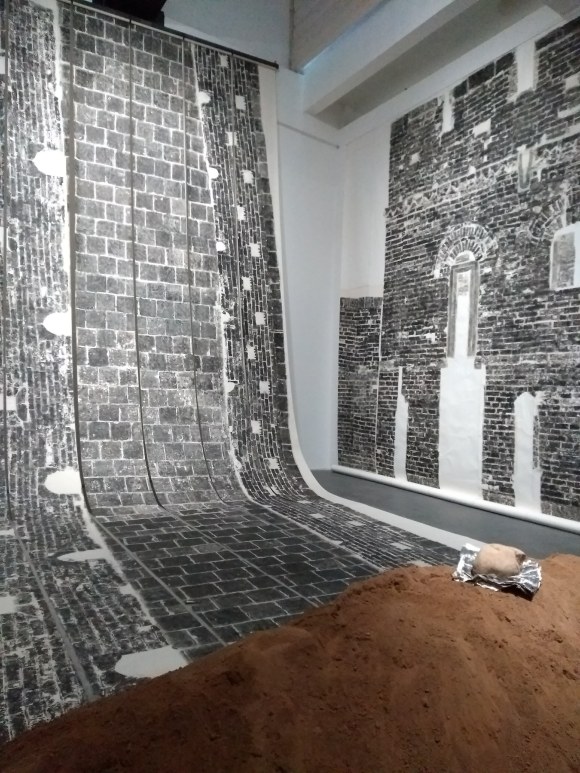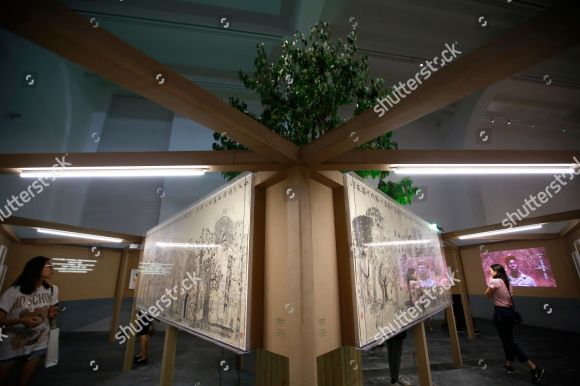Edit: After being in China for a year and a half, I came back to the North due to the pandemic. Even though consuming art and culture was a little more challenging, I was able to explore and find some places around China that were awesome. Maybe as a sort of reliving of the experiences or for sheer selfish glee, I thought I’d share some of these experiences with HAWG. Let me know what you guys think or if there’s any corrections needed! Get touch through our socials or by emailing heyartwhatsgood@gmail.com Ellie x
您好,欢迎您到北京来!
So it’s been a good few weeks since I left the beautiful toon and I’m now living in Chongqing (its one of the biggest cities in China you’ve never heard of). However, before I left for the spicy oven that is Chongqing (as a northerner there has already been many a time where I have been reduced to a puddle of sweat), I had some time in Beijing. After days of a hardcore teacher training bootcamp, I had an afternoon free to go and explore art district 798 in Beijing.
If you ever have the chance to visit Beijing, I would fully recommend this place. It is the former site of a huge military factory complex, which by the late 1980s had ceased production. In the early 2000s Chinese and foreign artists began moving into the abandoned factory spaces creating exhibition spaces, cafes, bars and studios. Most of the factory and brutalist aspects have been kept and the place oddly feels a little like Berlin with its industrial aesthetic. Now in 2018, the spaces are thriving. But it does feel a little less like an occupied and independant space and more like a space you come to sell your work and establish your career as an artist.
The industrial scenes of 789 are pretty vast, its heritage is not easily forgotten.
That being said I thoroughly enjoyed the exhibition that was being held at the UCCA Center for Contemporary Art; Xu Bing’s Thought and Method. Xu Bing is an artist who is known for his meticulous and detailed pieces and this exhibit showed many of his most famous works. He has been part of the shifts and changes that have occured in China over the past 40 years and these experiences are very much present. In the 1990s he also moved to the US and worked at Wisconsin-Maddison University before moving back to China in the 2000s. His past and China’s past, adapting to living in America and the written language feature heavily in his works.
This exhibition showcased many different aspects of Xu bing’s career and his evolution as an artist. I cannot even begin to talk about all of the different aspects this exhibit covered. The exhibition felt like a true homage to him and was curated in a white factory space. The first piece of the exhibition was called Books from the Sky. This was definitely one of my favourites.
This piece was based on a book created by Xu, and it took 4 years to make. These scrolls contain reams and reams of Chinese characters that don’t make sense. Members of the public spent hours trying to read and make sense of it. The artist definitely perfectly showed mankind’s dependency on words and how much we assume the patterns we create from things are real. Or how we should apply something written down to reality. It was interesting seeing something so huge and official looking that was complete nonsense.

Part of the books from the sky exhibit, the scrolls contain thousands of nonsensical characters (http://ucca.org.cn/en/exhibition/xu-bing-thought-and-method/)
Playing with language, especially Xu’s own experiences of Mandarin and learning English were fascinating. In Square Word Calligraphy he blended the English alphabet into a sequence of strokes similar to how you write characters in Mandarin. This was put into a model classroom where you could practice this made up alphabet with water and a calligraphy set. Lots of people were playing with this part of the exhibition and it was refreshing to see an informal interaction between people and the artist’s work in such an official space. The detailed approach to combining the language in an absurd and confusing manner might reflect his own encounters with language and culture in the USA and then assimilating back into China. Both languages are so different in the way they are written and expressed in language, blending them together is something I simply cannot imagine and putting it into a classroom adds to the feeling of not understanding but copying down anyway that acquiring a language or any knowledge can sometimes feel like.

Square word calligraphy classroom, a traditional classroom setting in which to practice a made up language (http://ucca.org.cn/en/exhibition/xu-bing-thought-and-method/)
As Xu was primarily trained as a printmaker, prints were a prominent aspect of his work. Another huge piece of work showcased called Ghosts pounding the wall was a rubbing he did of the great wall. This was filmed and the rubbing of the wall was hung in a huge room from the ceiling. Freya, who I visited the exhibition with, found its presentation and actual undertaking of the project very impressive. It is a piece of Chinese history and a tourism point that is heavily associated with China. The wall was meant to keep people out in the past and preserve the emperor’s kingdom but what does it represent in the national identity now after so many years and changes? Xu seemed to want to highlight this question and bring it into the public consciousness.

Ghosts pounding the wall, the 3-D structure transformed onto paper.
Unfortunately, we didn’t have enough time to see all of the art in the exhibit and we ran out of time to properly look at it. But another quick exhibit I would like to mention was the Forest Project which in the words of Xu Bing ‘connects the written word, calligraphy and art into one process.’ Basically, this project aims to help transfer funds from developed countries into education and planting trees in Kenya by creating a link between art lovers and local communities. The way this is done is by doing workshops primarily with school children in different parts of Kenya ,in which trees are created from the language and characters used to define what a tree is. These pieces are then sold and the proceeds go to helping to plant trees in Kenya. In the exhibit, there was a huge tunnel that spiralled around a live tree and some of the works were showcased here. Although not the most technical area of the whole exhibit, it was nice to see a project that was trying to combine so many areas together and it was an effective way for Xu Bing to try and use his platform to benefit people.

It’s a shame we had to ‘leave’ after this exhibit.
(https://www.shutterstock.com/editorial/news/xu-bing-art-exhibition%2C-beijing-2018-07-24)
Overall, it was great to get out and see some art in Beijing, 789 is a huge complex and is a definite hub for art in northern China. Although I am far away from the ladies and the northern powerhouse that is ‘Hey Art What’s Good’, I feel so close to them whenever I enter an exhibition space. I can almost hear their laughter as I walk around the rooms, thinking of the patterns we could discuss and what we all think each piece is trying to say about itself and the world.






You must be logged in to post a comment.